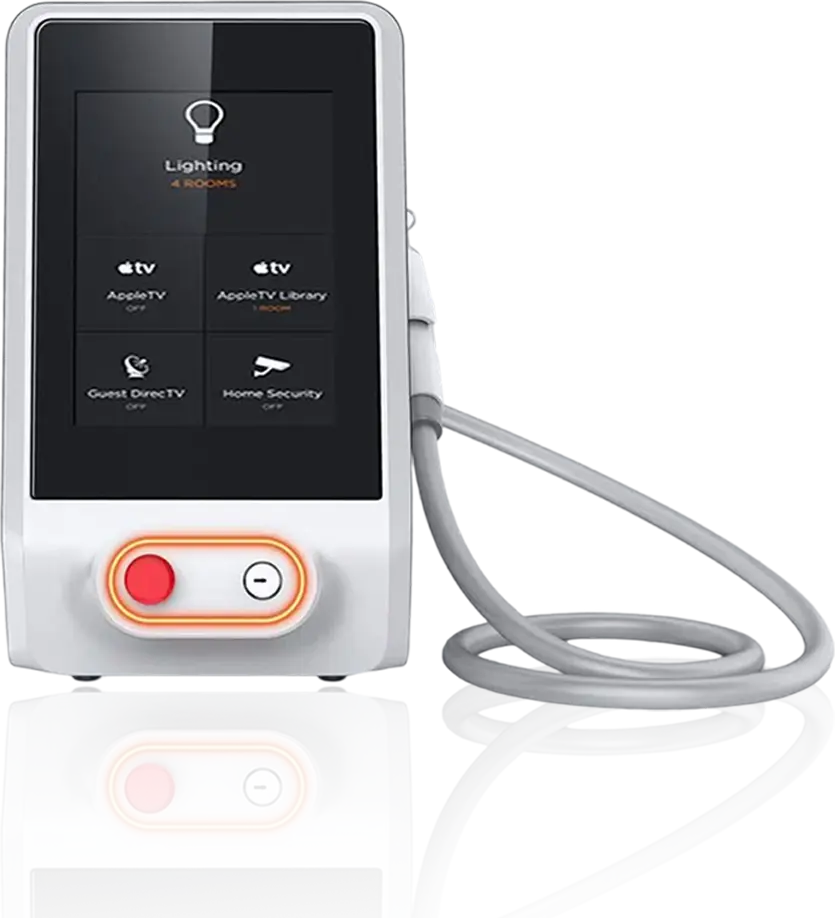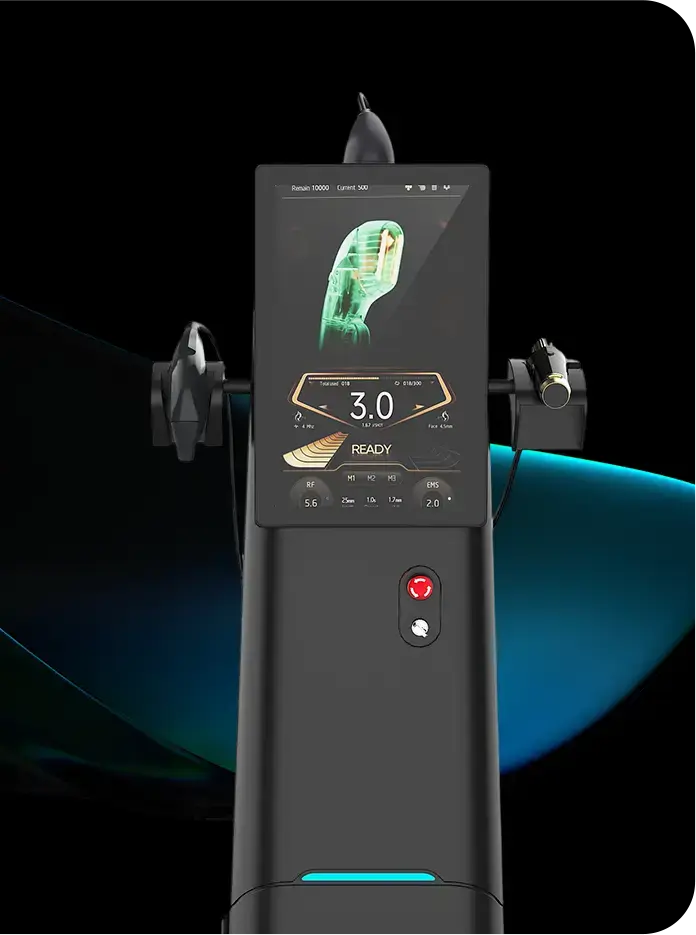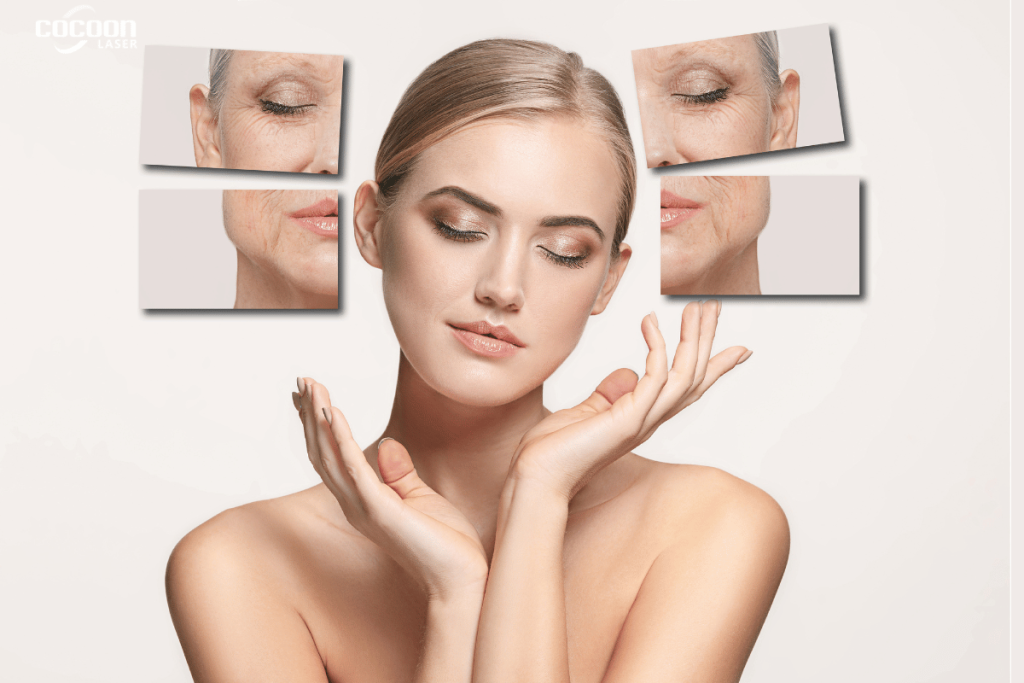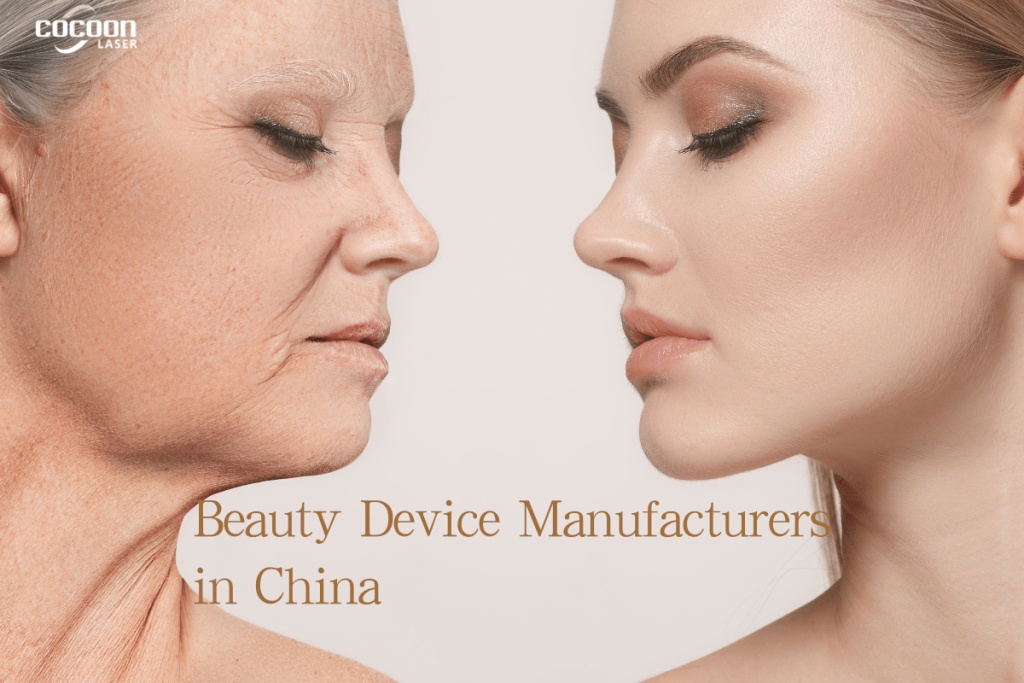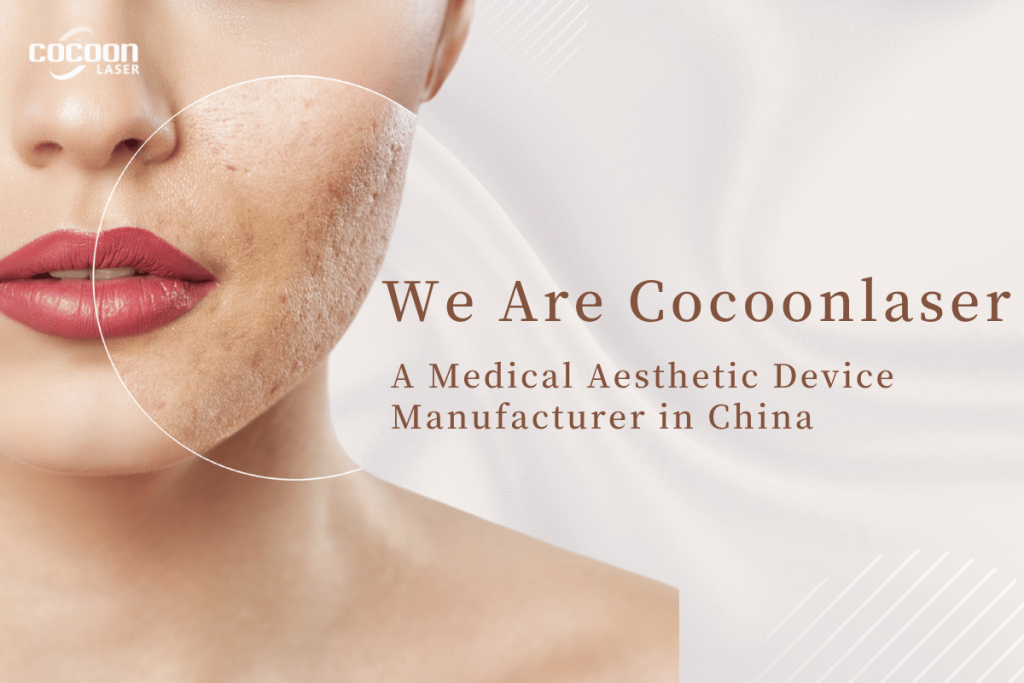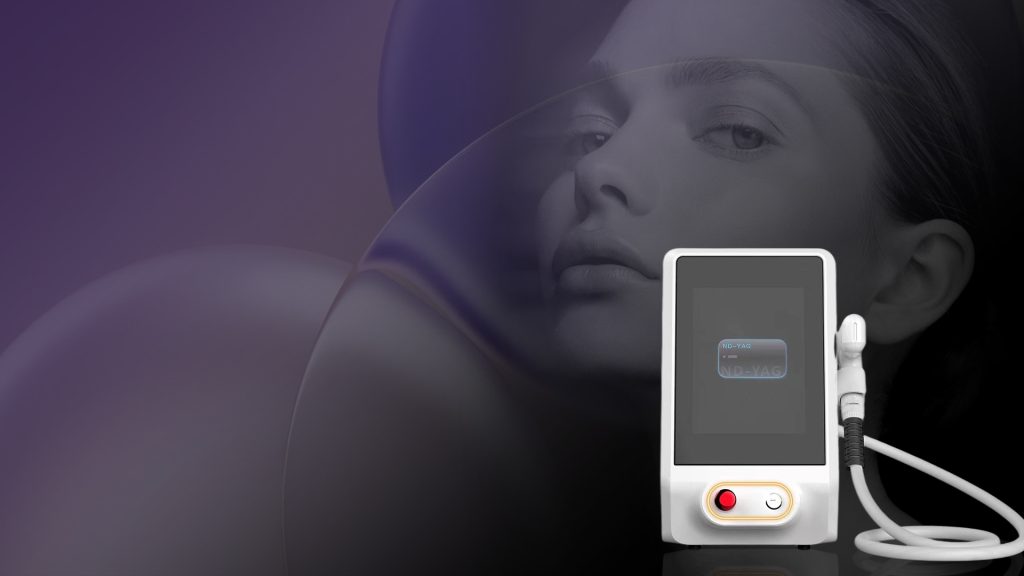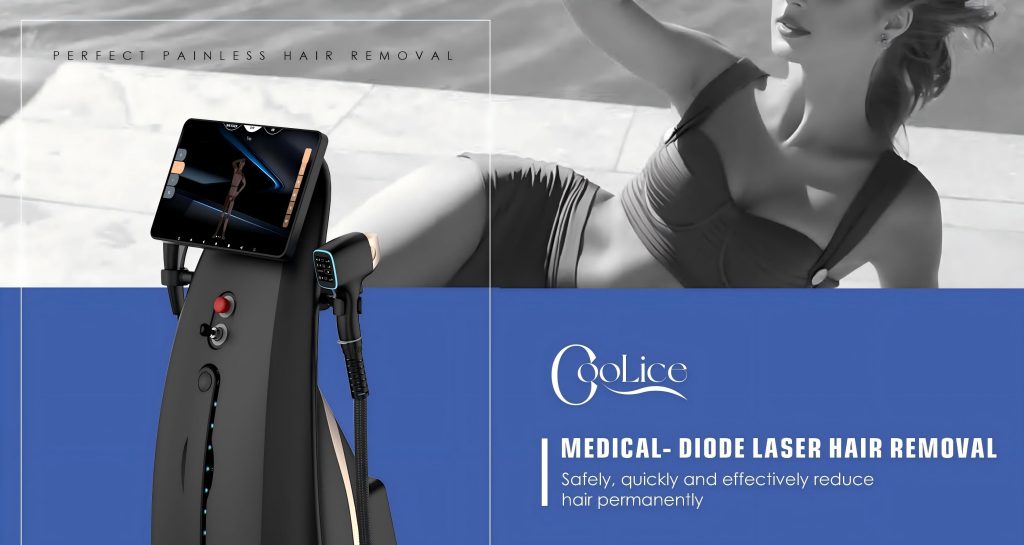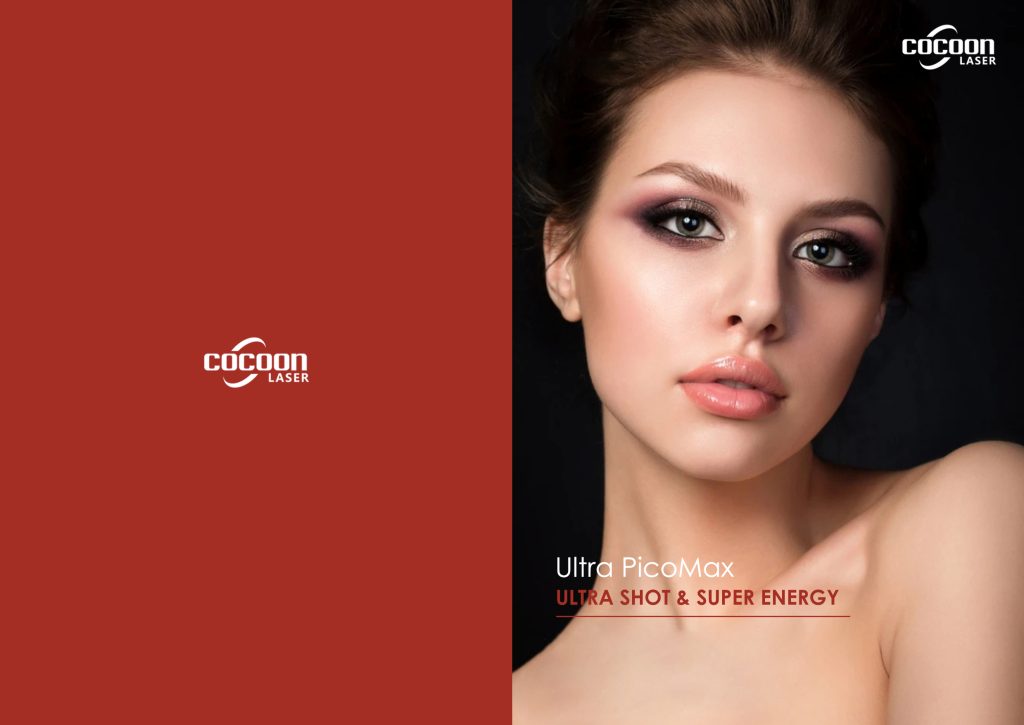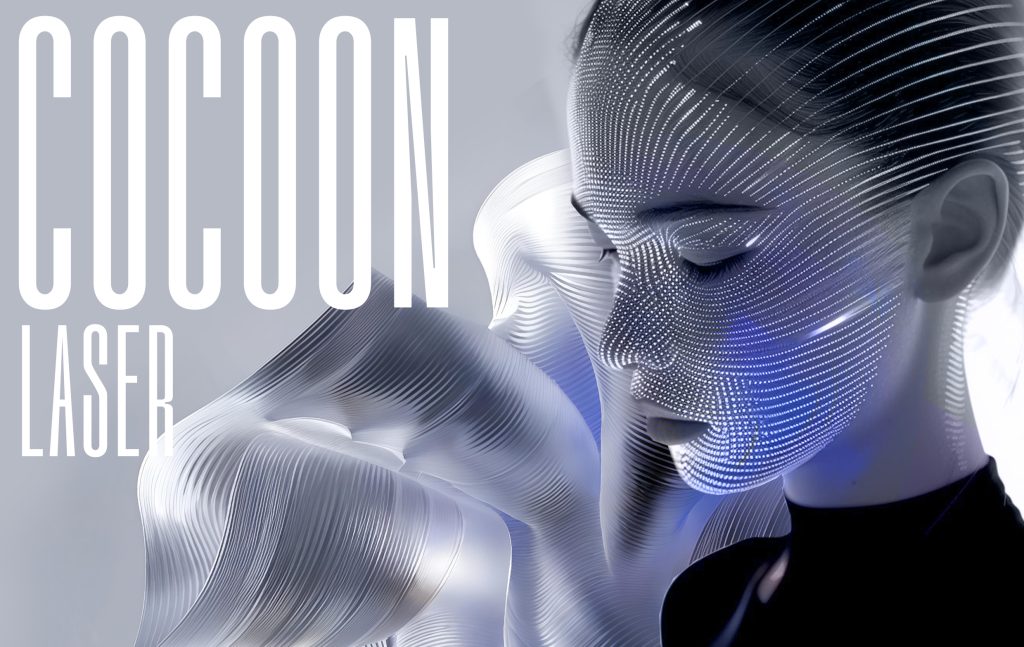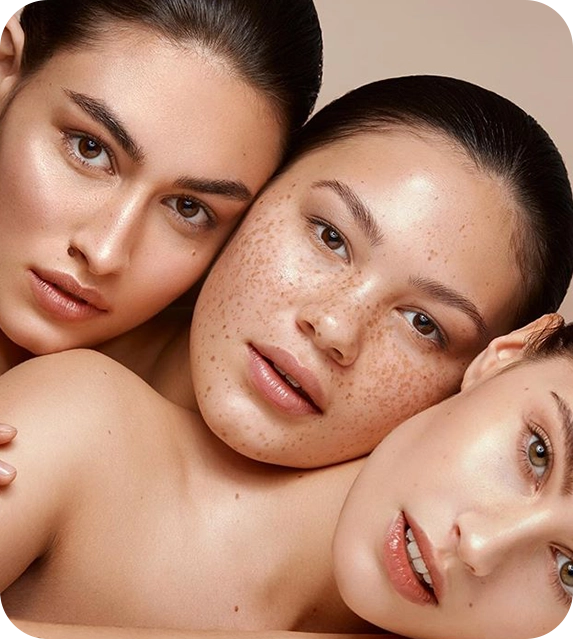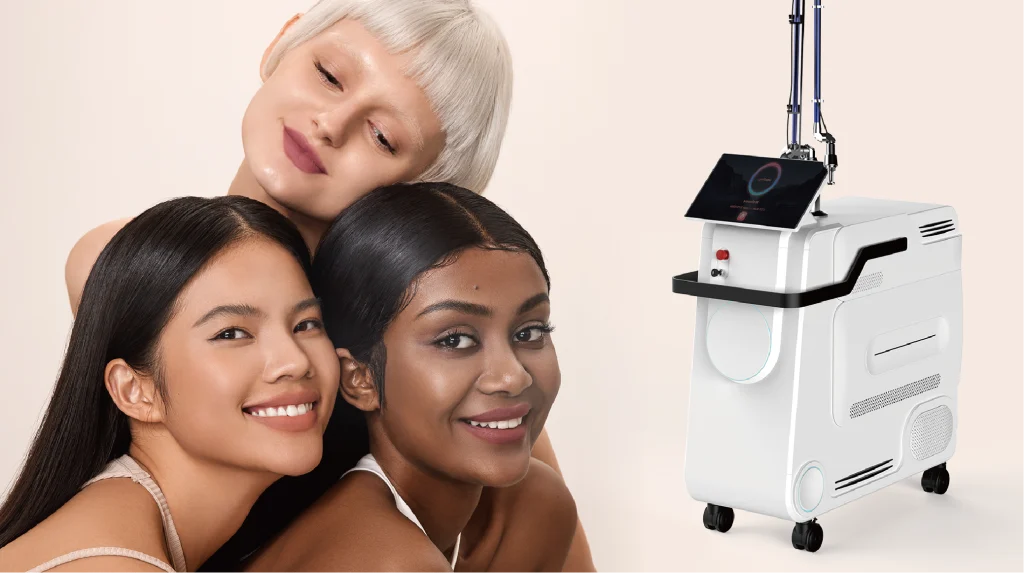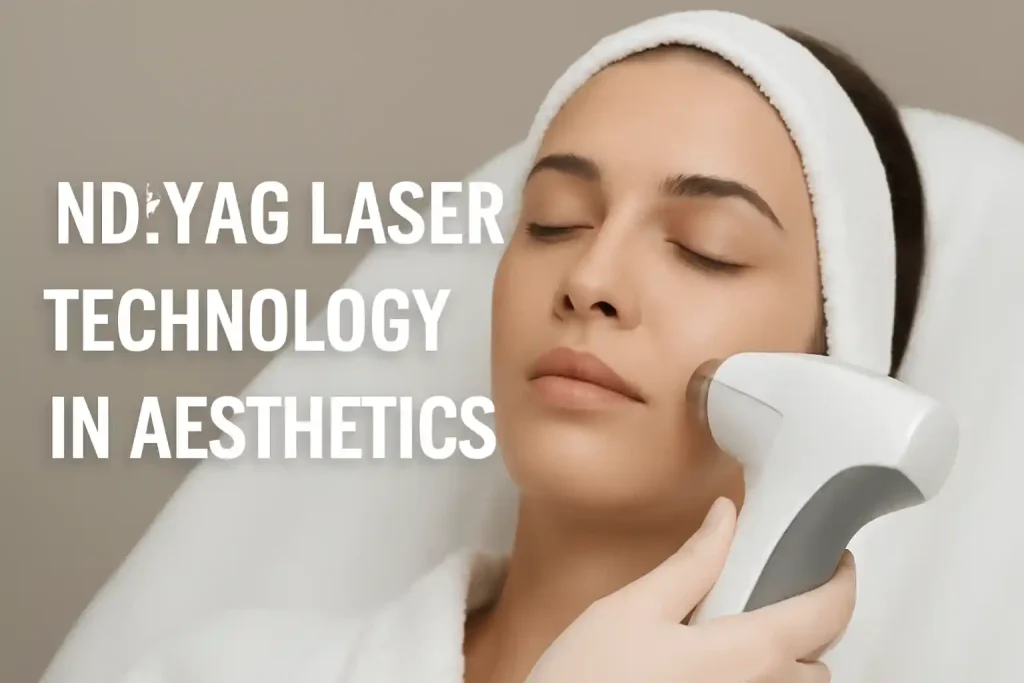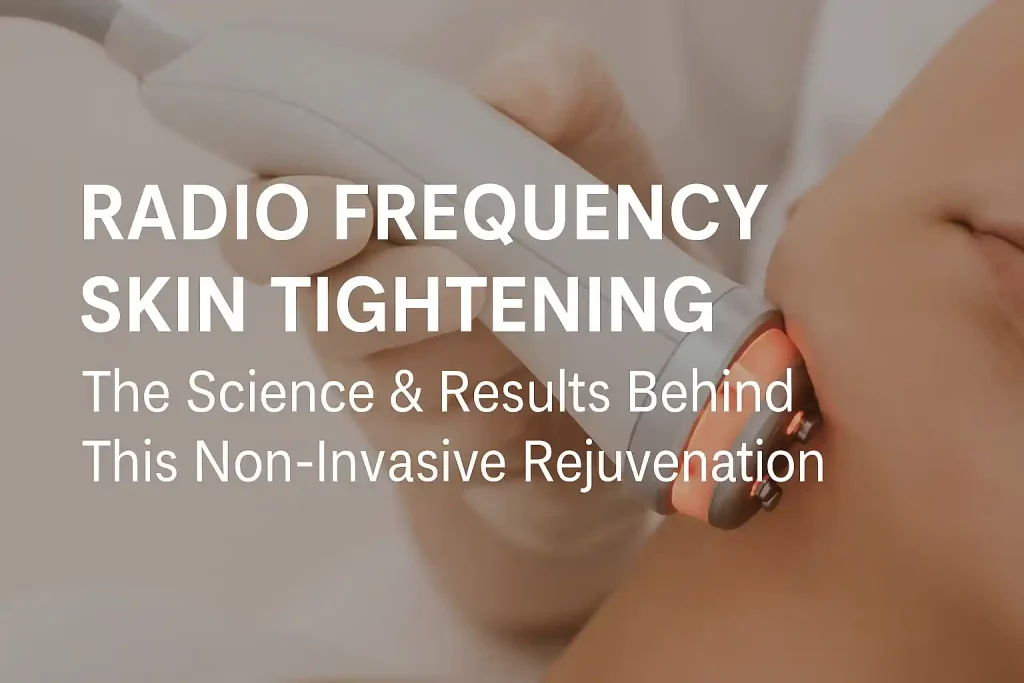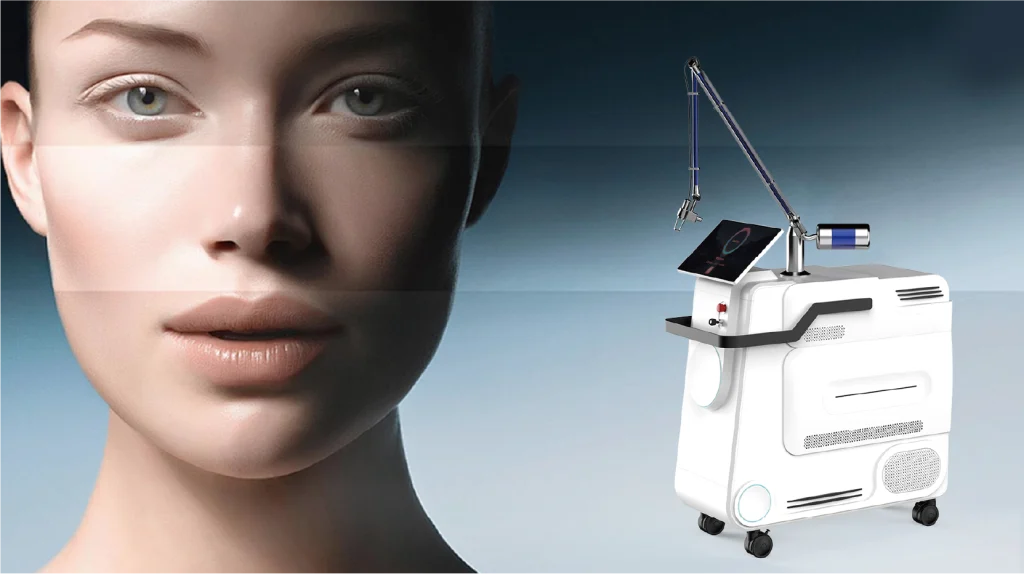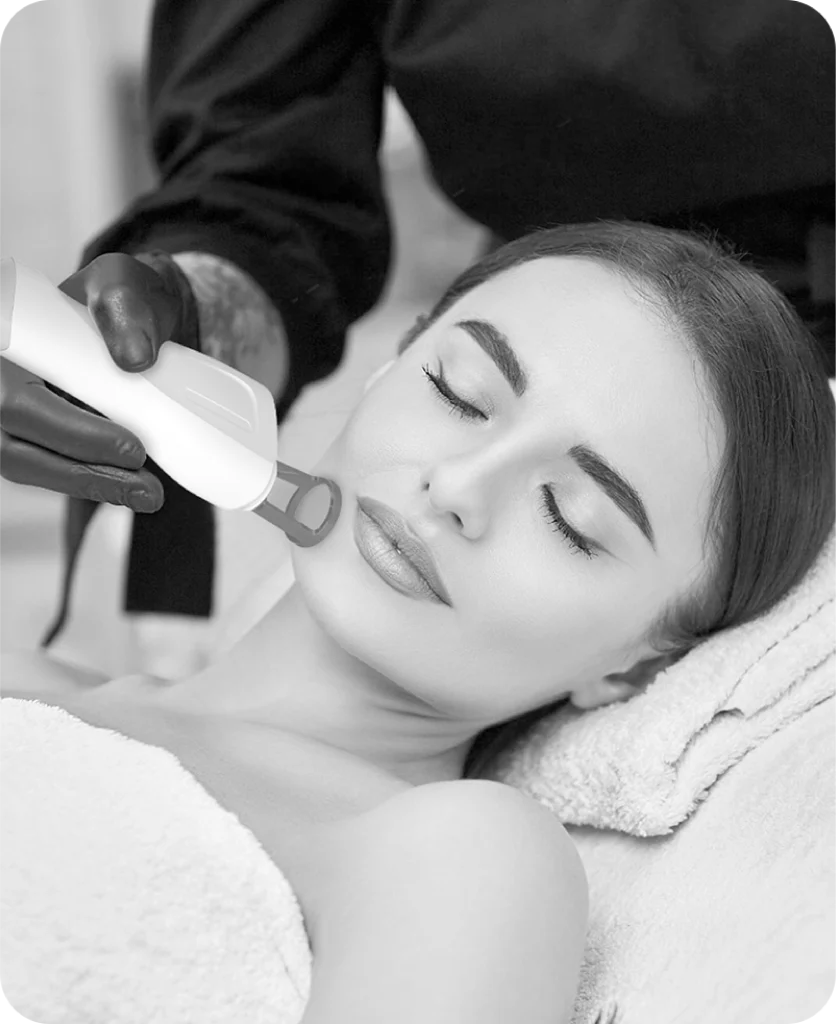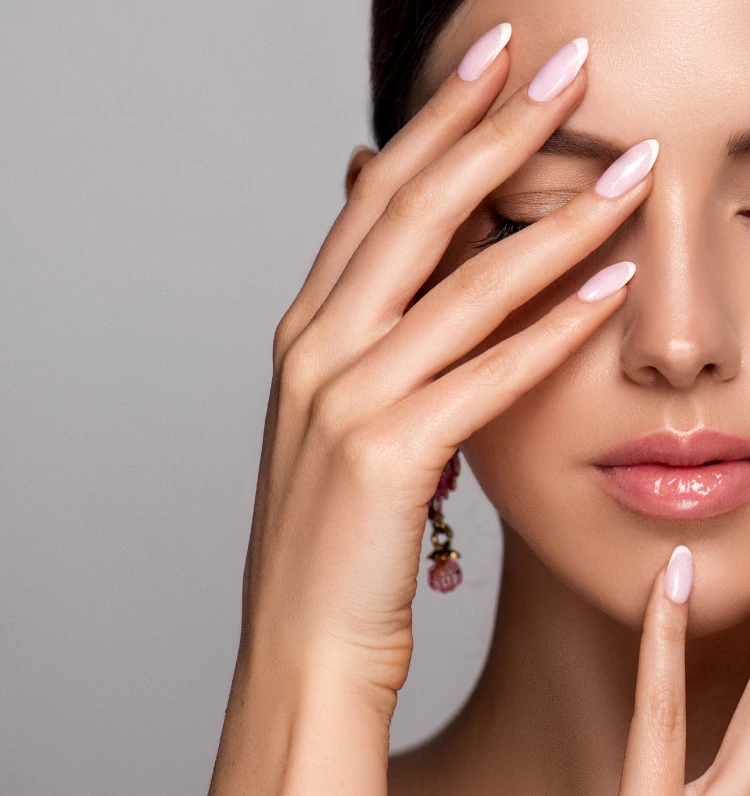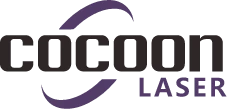2026 IPL beauty device spectrum and principle
Internal link: See our all-in-one system: OPT-IPL Max | Cocoon Laser
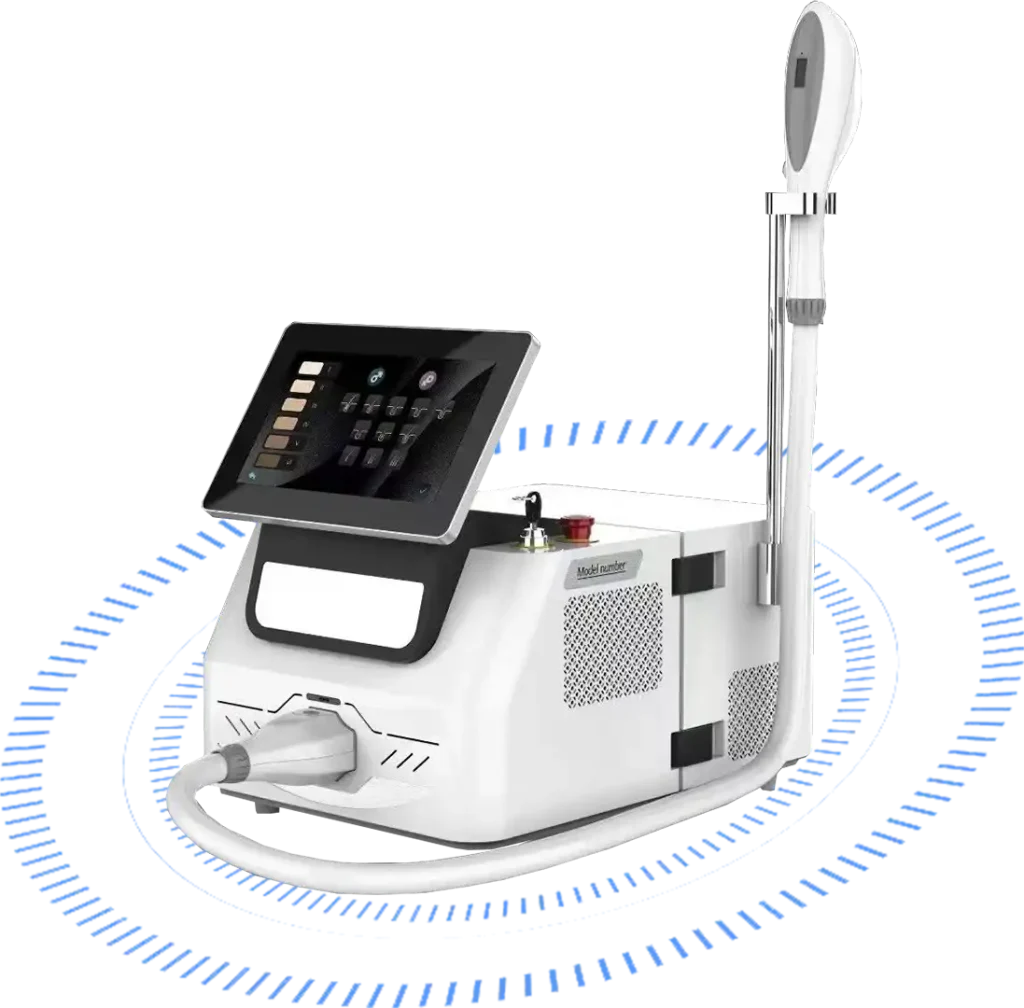
Why IPL still matters in 2026
For salons, med-spas, and distributors looking for a versatile beauty device, IPL remains a high-value platform: one console, multiple indications, mature consumables, and a short learning curve. Its wide adoption comes from a simple idea—control the wavelength window, pulse width, and fluence so target chromophores (melanin, hemoglobin) absorb energy efficiently while surrounding tissue stays safer.
Spectrum: what wavelengths does an IPL beauty device use?
Modern IPL systems typically operate across a broad spectrum of visible to near-infrared light—commonly about 515–1200 nm (Reference: IPL Technology: A Review) —then “shape” that output using cut-off filters. A 560 nm filter, for example, passes ~560–1200 nm, making it useful for superficial pigmentation/erythema. Higher cut-offs like 590/640/695 nm push the spectrum toward deeper-penetrating red/near-IR bands, lowering epidermal melanin absorption and improving tolerance in darker skin types when paired with proper cooling and conservative parameters.
Quick memory hook: the higher the cut-off → the longer the effective wavelengths → less epidermal melanin uptake → safer for many Fitzpatrick IV–VI scenarios, but less “bite” for very superficial pigment/telangiectasia.
Principle: selective photothermolysis
IPL follows the same physics as lasers—selective photothermolysis—but uses polychromatic, non-coherent, pulsed light instead of a single wavelength. Chromophores absorb light and convert it to heat; if the pulse duration is matched near the target’s thermal relaxation time (TRT), the target warms enough to be damaged while surrounding tissue dissipates heat.
- Melanin absorbs broadly in the visible range, tapering into near-IR.
- Hemoglobin shows key absorption peaks around the green-yellow range (≈542/577 nm), which informs filter selection for redness and vessels.
- Water absorption rises in the near-IR, explaining gentle dermal heating and collagen remodeling with longer wavelengths.
Parameters that matter in real-world use
- Pulse structure: Many platforms offer sub-pulsing (double/triple pulse). Breaking one long pulse into multiple sub-pulses allows partial cooling between them, lowering epidermal peak temperature while still summating heat within the target.
- Fluence (J/cm²): Start conservatively and increment according to skin type, lesion depth/size, and cooling efficiency. For B2B buyers, insist on calibrated output and uniformity data across the spot.
- Spot, cooling, coupling: Sapphire windows with active contact cooling and a quality coupling gel reduce surface overheating and improve light delivery consistency.
Indication snapshot (typical use cases)
- Photoaging & dyschromia: lentigines, mottled pigmentation, overall tone and texture improvement via repeated low-to-moderate energy sessions.
- Vascular redness: telangiectasia and erythema respond well to shorter cut-off filters targeting hemoglobin peaks.
- Acne/PIE: vascular-leaning filters can assist with inflammatory components and diffuse redness (as always, align with local medical regulations).
- Hair reduction (select platforms): higher cut-offs (e.g., 640/695 nm) help bias energy toward the follicle while easing epidermal melanin load.
Always screen for: recent sun exposure/self-tanning, photosensitizing drugs, pregnancy, keloid tendency, active infection, and expectations management.
2026 buyer’s checklist (clinics, chains, distributors)
- Filter portfolio: Ensure access to workhorse cut-offs such as 560/590/640/695 nm; add specialized vascular/acne filters if your market needs them.
- Energy & uniformity: Request factory output calibration and spot uniformity maps; uneven beams cause striping and inconsistent results.
- Pulse engineering: Verify true double/triple-pulse delivery with adjustable delays and ms-level control; confirm that sub-pulse energy is independently regulated.
- Cooling system: Prefer sapphire contact cooling with real-time temperature feedback for safer operation at useful fluences.
- Maintenance & TCO: Lamp life, filter change workflow, consumable pricing, and local service SLAs can make or break ROI.
- Compliance & documentation: Match labeling, user training, and claims to your jurisdiction. Ask for clinical guidance, treatment charts, and contraindication lists.
See it in action: an all-round beauty device
If you want a single platform that covers photoaging, pigment, redness, and hair reduction efficiently, explore OPT-IPL Max. It’s engineered for consistent output, fast filter swaps, robust cooling, and clear SOPs for team training—ideal for 2026 rollouts and distributor portfolios.
→ OPT-IPL Max product page
FAQ
Q1: Is IPL a laser?
No. IPL is polychromatic, non-coherent pulsed light shaped by filters; lasers emit a single coherent wavelength. Both rely on selective photothermolysis.
Q2: 560 nm vs 590 nm—what’s the difference?
590 nm shifts energy deeper and reduces epidermal melanin absorption versus 560 nm, often improving comfort/safety on darker skin types while slightly reducing bite on very superficial lesions.
Q3: How many sessions are typical?
Most clinics package multiple sessions (e.g., 3–6) at intervals, adjusting by indication and skin type. Always patch-test and titrate.
Q4: Can one beauty device handle pigment and vessels?
Yes—if it provides a solid filter set, calibrated fluence, sub-pulsing, and strong cooling—and if your protocols (and local regulations) support those indications.
Q5: IPL vs. Laser Hair Removal: Which One is Right for You? (2025 Expert Guide)
This guide compares IPL and laser hair removal technologies in terms of efficacy, skin type suitability, speed, pain, and cost. For a full breakdown see: IPL vs. Laser Hair Removal: Which One is Right for You? (2025 Expert Guide)


